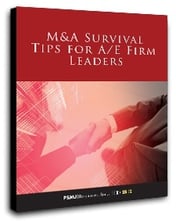
While we have started to see more activity in recent years, private equity investment isn’t particularly common in the A/E space. Compared to the traditional seller/doer/owner model that is the norm, the idea of external ownership is an abstract idea for many A/E firm leaders. However, with growing capitalization pressures associated with internal ownership transition as well as a need for additional capital to fund growth objectives, more A/E firms are finding a fit with private equity investment.
We get a lot of questions from A/E firm leaders about the mechanics of private equity. One of the most common questions relates to the investment horizon and what happens after that investment horizon. First off, just about every outside equity investor will have an exit strategy. That is, the idea is to get in (make the investment), take steps to create value of a certain time period (often through acquisitions and operational improvements), and then get out (the liquidity event) and create a return for the investors.
The time period from the initial investment to the liquidity event is usually somewhere on the order of five to seven years. What happens after this time period is most often one of the following:
A. Sale to a strategic buyer. A ‘strategic’ buyer would be an operating A/E firm interested in acquiring your firm. So, let’s say your firm grew from 200 people to 750 people during the private equity investment. Under this scenario, the firm might be acquired by a global industry player.
B. Sale to another financial buyer. This would be a sale to another private equity firm or external investor. Every private equity firm has a zone where they are most comfortable…when the firm gets to a point where the first investment firm feels they have gotten it as far as they can, another firm might see this as a good point to get in and take the firm to the next level.
C. Initial public offering. This isn’t very common in the A/E industry, but is always a possibility. That is, the private equity firm then takes XYZ Engineering public and realizes liquidity for their investment through that process
In just about any private equity scenario, some ownership is left in the hands of the management team. So, while you wouldn’t be a controlling interest owner anymore, you would still be able to realize a ‘second bite at the apple’ when one of the above-mentioned exit scenarios takes place.
The most important realization in all of this is that there will be an investment horizon. Few external investors will want their money tied up in the firm indefinitely and this can be a marked change in thinking for firm leaders used to viewing the business (and investment in it) from the ‘long haul’ perspective.
 Merger & Acquisition (M&A) activity in the architecture and engineering space is certainly on the upswing and well on its way to reaching pre-recession levels. But, how ready are you for taking on the task of buying or selling an A/E firm? If you are looking for tips to help your firm navigate through the M&A process, check out PSMJ complimentary ebook M&A Survival Tips for A/E Firm Leaders.
Merger & Acquisition (M&A) activity in the architecture and engineering space is certainly on the upswing and well on its way to reaching pre-recession levels. But, how ready are you for taking on the task of buying or selling an A/E firm? If you are looking for tips to help your firm navigate through the M&A process, check out PSMJ complimentary ebook M&A Survival Tips for A/E Firm Leaders.
Other M&A Related Posts
A/E/C Mergers & Acquisitions in September
A/E/C Mergers & Acquisitions in August
Expert Interview: Assessing Current M&A Market Conditons and Trends



